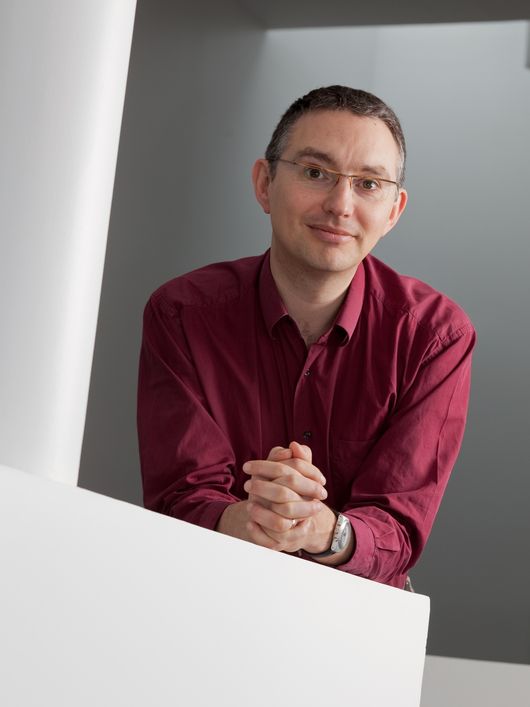
When it comes to declipping an awfully saturated piece of music, current commercial tools can't do much better than . . . this. Not exactly copacetic indeed. But things are about to change as a prototype declipper born of the latest academic research has recently managed to deliver a level of quality previously unheard of.
“Interestingly enough, Spade wasn't built on purpose. It emerged somewhat by chance out of a freewheeling brainstorming, recounts Rémi Gribonval, head of Panama, a research team at the crossroad of audio modeling and mathematical signal processing. Working on sparse tools and inverse problems in the context of an EU-funded research project, we held a string of small-scale collaborative workshops with colleagues from various teams specializing in the audio or the image processing field. One of the topics broached during these sessions was image inpainting ―i.e. filling up a missing portion in an image. From there, we ended up asking ourselves: what would be the equivalent of inpainting in the audio field? And declipping is what immediately came to our mind.”
Clipping occurs when the maximum range of an acquisition system is exceeded. “Beyond a certain threshold, the sinusoidal waveform gets truncated. Only the part below this threshold can be observed. From there, we asked ourselves: why not consider declipping as merely a particular type of inverse problems? Why not try to use our mathematical tools to reconstruct the missing part of the signal using its known properties?”
This train of thoughts eventually led to a first publication in 2012 in which the concept was introduced. Exploiting the same type of a priori knowledge that is used for audio compression (MP3, AAC …), the approach significantly outperformed previous methods in term of quality. The only catch: “the algorithm was slow.” An ensuing thesis by PhD student Srđan Kitić provided the opportunity to design a much faster mechanism. “This is what we call a cosparse model. In a nutshell, it allows far more efficient representations” and superior scalability. “Now SPADE can declip audio files in real time, which we couldn't do previously.”
Demonstrator Available as a Web App
In the latest development, a SPADE demonstrator has been made available as AllGo, a new platform meant to facilitate the use of Inria's scientific applications. “We thought it would be an excellent showcase to promote our research findings and let people have a try. So everyone can log in, upload 30 seconds of audio file and get it declipped.”
The new technology also grabbed the attention of the industry. “Our algorithms were recently integrated within the software suite of Cedar Audio. This Cambridge, UK-based company is the world leader of professional audio restoration solutions.” Other vendors are expected to follow suit. “In retrospect, Gribonval concludes, it's a beautiful example of how very upstream research can come up with real findings that will eventually lead to valuable applications.”
